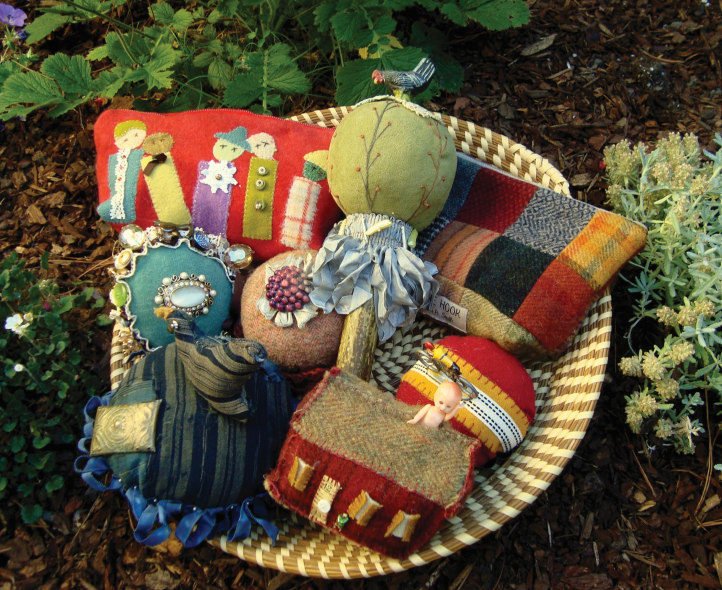
But, sadly, calamity can strike when we try to force some leftover pieces of wool into our new rug. That can result in a sickly version of the color you really wanted. Your gut tells you the truth. So what to do with all that wool? That is the question.
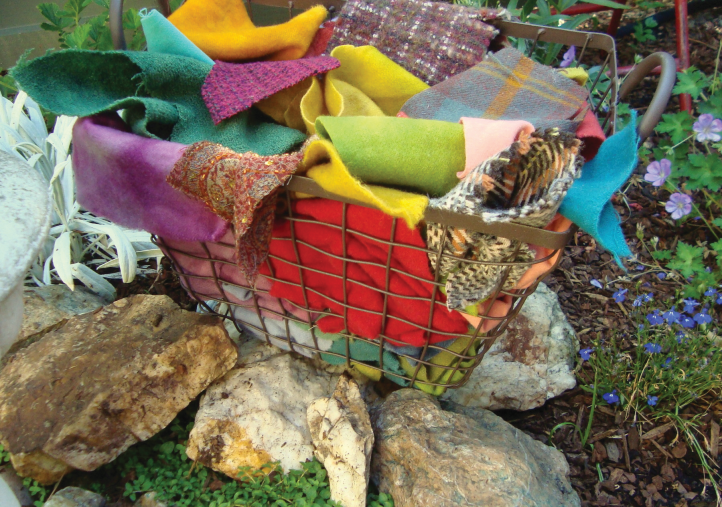
Luckily, wool is versatile. And you, like me, probably have a lot of it. So think of the options: you can create other projects to use it up. For instance, you can use a bag of worms to stuff a hooked pillow to give it weight and heft. That soft wool is especially good for a lumpy, malleable pillow that really sinks into a sofa corner. Oh, so comfy.
To use little chunks of wool, here are some delightful small treasures to create. Pincushions are useful, lovely, and collectible. Why not make one for yourself and one for a friend? You’ll never miss the small bits of wool required, and you’ll have some wonderful little creations—perfect for gifts.
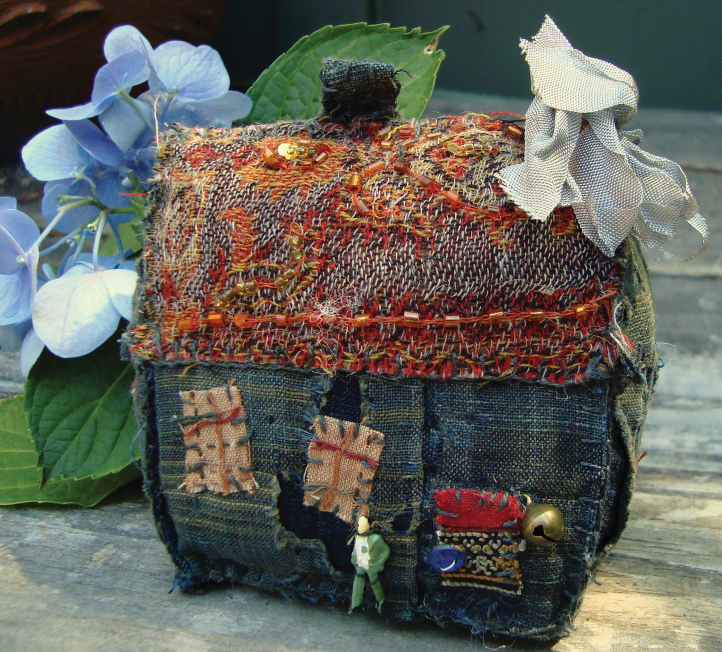
Do you like your pincushions to have holders? Look for recyclables at garage sales, estate sales, flea markets, or even in your own home. If you can’t bear to throw away some of those favorites, refashion them into pin cushion containers.
Old candlestick holders work well to hold a smallish round cushion. Vintage wooden spools make fantastic stands for pin cushions. The variety in height, weight, and width will inspire some great ideas. Cherish those vintage single jello mold tins—they are perfect for small, portable cushion containers. Vintage individual tart tins come in various metals, including copper, for a charming pincushion receptacle, the perfect end for a well-used and well-loved kitchen favorite.
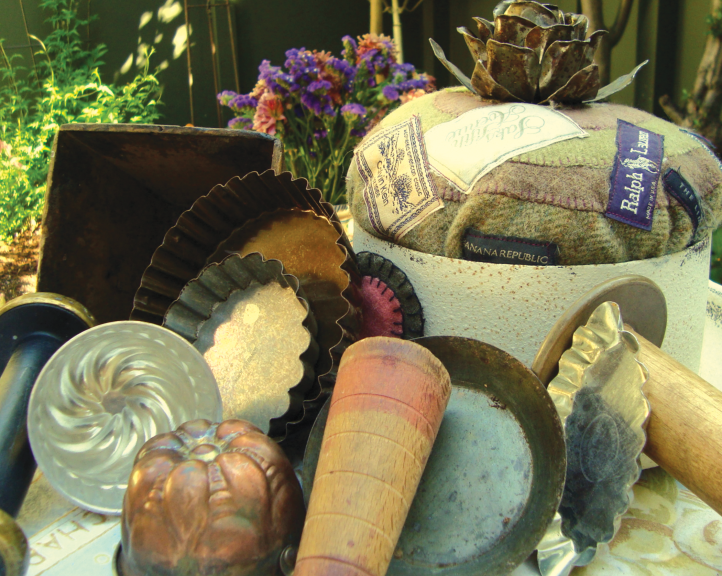
On a larger scale, find a farmer’s antique cream can cover. A milk can cover may work too for a large pincushion, but will be larger, with a deeper rim. Turn the lid flat side down, and you have a generous-sized pincushion holder. Stuff partly with wooly worms, mixed with other stuffing materials.
Appliqué wool on wool on wool to use even more scraps and make a triple-size pincushion. Use your own family’s orphaned vintage cups and saucers, or search for some in antique shops for another charming way to build a pincushion. Make the pin cushion in the cup; the saucer helps secure and balance the finished project.
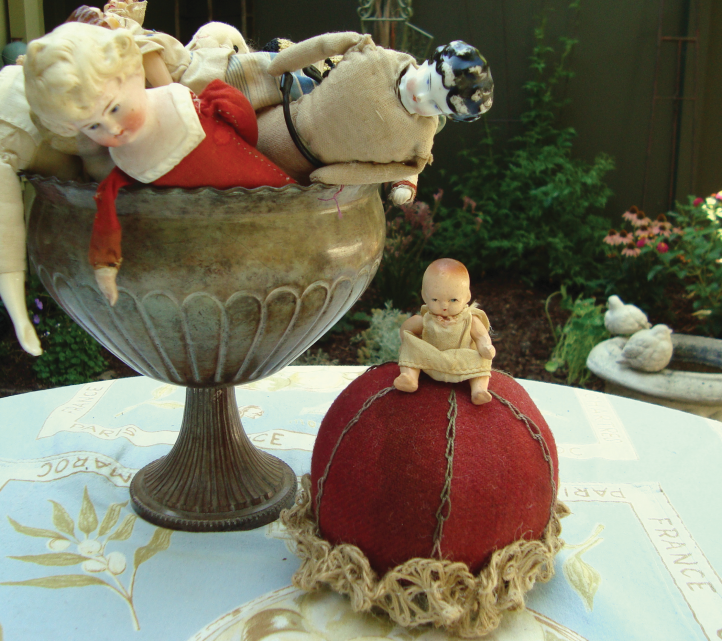
Stand-alone wool pincushions are equally beautiful. You will find many free patterns for cushion shapes and sizes online. I’ve seen birds, chickens, balls, rabbits, and many others. Consider using polyester soft filler material found at many craft stores. Crushed walnut shells (sold in many pet shops) make excellent filler. Sawdust is heavy and therefore makes a great filler where you need some heft. It is a good idea to line your woolen pincushion with another fabric before stuffing to keep particles of sawdust or walnut shells inside the wool covering.
Ah, sewing. Do you like hand sewing or machine sewing best? Some people love both, others dread the machine. Either way, a finished little wool pouch or envelope is within reach, whatever your mood and skills. Don’t worry—these small projects are accessible to anyone, even if sewing is not your favorite activity.
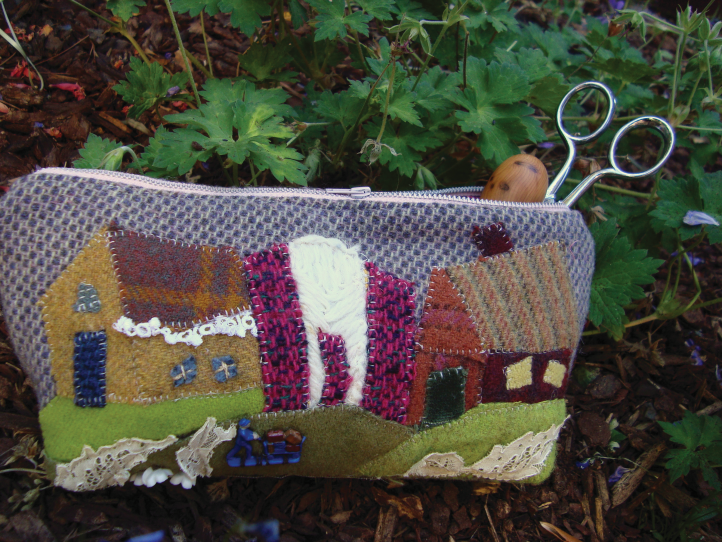
Start with scraps of wool. Consider the “look” you’re going for—do you like worn, old, tattered look? Or do you prefer a bright contemporary design? Every wool stash will have lots of options; all you need to do is open your mind to ideas. There are no rules.
The Internet offers numerous free pouch sewing patterns. Find the size, shape, and simplicity you want for your basic pouch. Then, when you have more experience, you can get even more creative by adding zippers, buttons, or magnets. You can line a wool envelope with another kind of fabric such as cotton or rayon for a soft holder for your precious hooks.
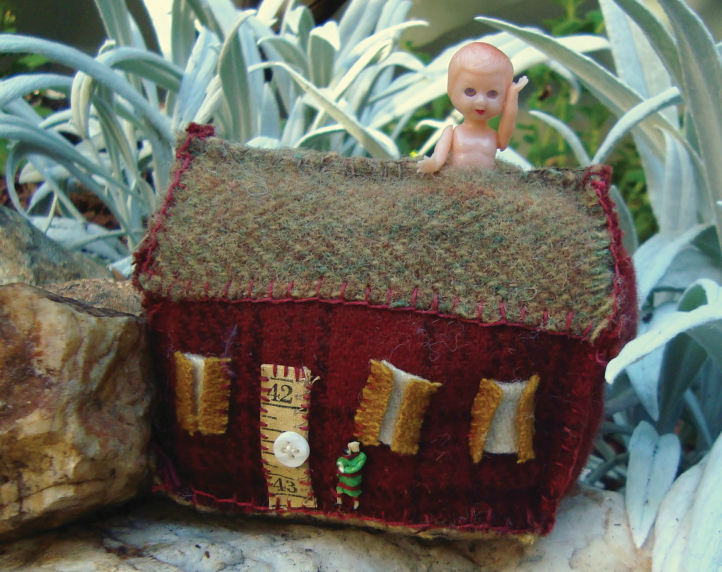
Not only do we all have wool stashes—most of us have stashes of all kinds of potential embellishments. Think about all those doodads you have collected over the years: yarns, buttons, ribbons, rickrack, beads, keys, chains, old jewelry, bells, pins, and your high school graduation ring. Any of these can be sewn onto your base wool fabric. You can embellish to your heart’s content until you’ve used up all those precious keepsakes. And now, treasures that may have been tucked away somewhere can be seen every day.

Do you need a cover for your rug hooking frame? Think of a creative way to make a wool cover for it. Don’t limit yourself. Make your frame topper big. Make it round, square, or rectangular. Embellish it with more wool, sewing, embroidery, or some of your embellishments. Cut out layers of wool landscapes and hand sew them on. Sew every old button you’ve collected onto the topper. Then add a wool backing to hide all those stitches.
Above all, use your imagination. Use those wool tidbits too small to hook with. Wool is versatile and malleable. Make yourself a pincushion or a wool envelope—make it fun and make it
personal.

I have used steel wool inside pin cushions – it works great to sharpen pins and needles.
Hello! I realize that this article is not specifically about pin cushions, but anyone happen to know what type of filler will help keep your needles sharp? Thank you.